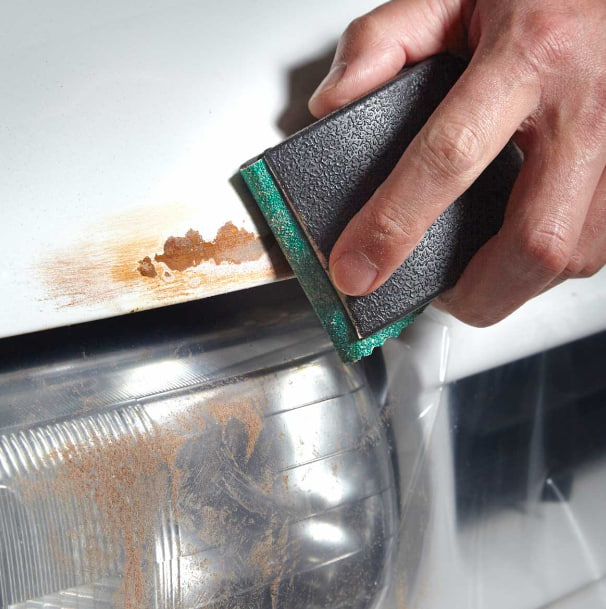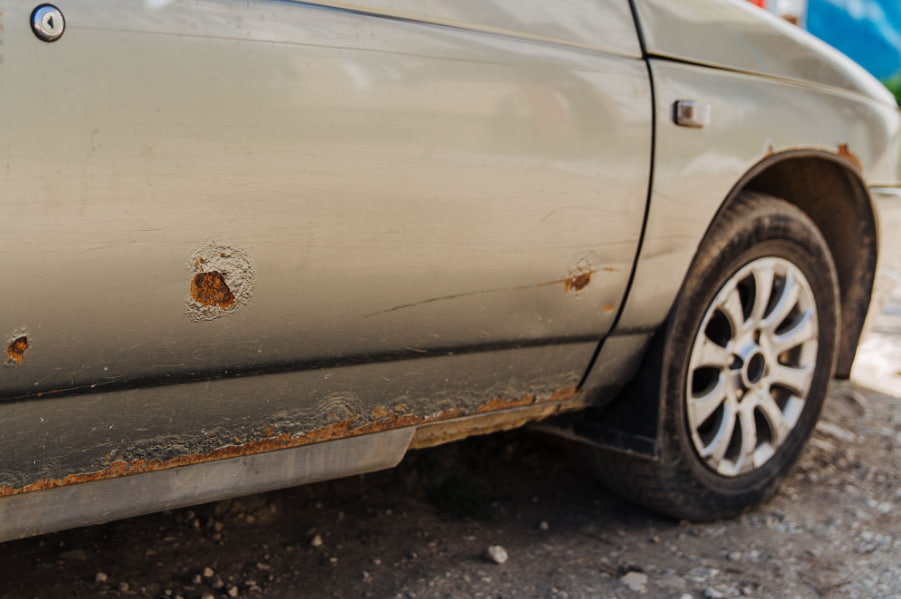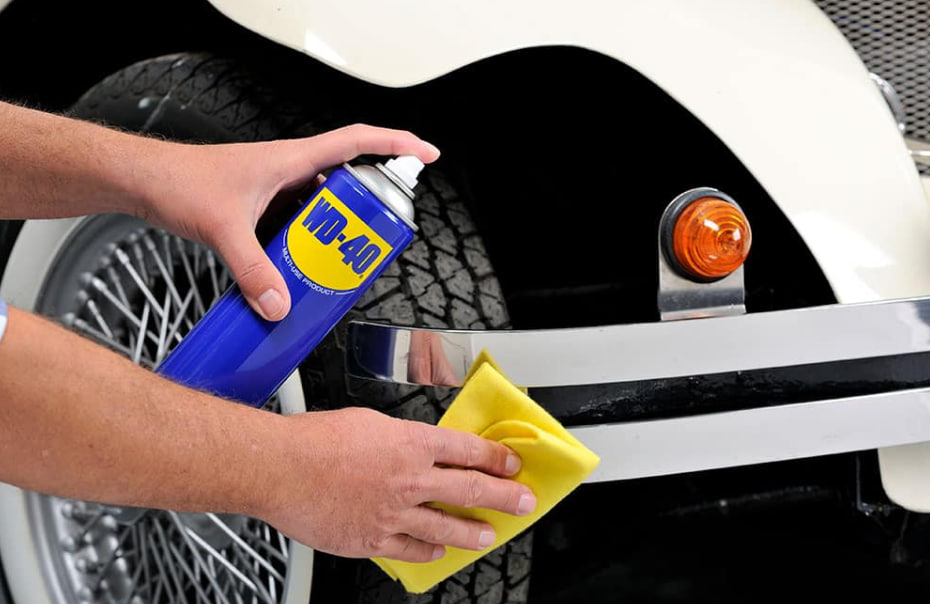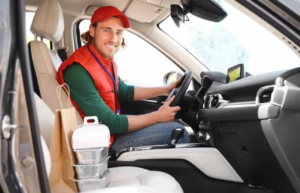
Tips to fix rust stains on cars
The sight of rust on a car can be quite disheartening for any car owner. It not only affects the aesthetic appeal of the vehicle but can also cause significant damage to its structural integrity over time. However, removing rust from a car can be a daunting task, especially if you are unfamiliar with the process.Now, we will explore some possible solutions for removing rust from cars and restoring their shine. So, if you are looking for effective ways to remove rust from your car, keep reading!

Polish and repaint rust spots
Polish and Repaint Rust Spots on Cars: A Comprehensive GuideRust spots on cars are a common problem that can be an eyesore, but also cause serious damage to the vehicle if not addressed quickly. The good news is that it is possible to polish and repaint rust spots on cars, and restore them to their former glory. In this comprehensive guide, we will walk you through the steps involved in polishing and repainting rust spots on your car.
Step 1: Assess the Rust Damage
The first step is to assess the damage caused by the rust. If the rust is minor, you may be able to polish it off with a rust remover. However, if the rust has eaten through the paint, you will need to repaint the affected area.
Step 2: Clean the Affected Area
Before you begin polishing or repainting the rust spot, you need to clean the affected area thoroughly. Use soap and water to remove any dirt or grime, then dry the area with a clean towel.
Step 3: Sand the Rust Spot
If you are repainting the rust spot, you will need to sand the area to remove any loose paint or rust. Use a fine-grit sandpaper to sand the area until it is smooth. Be sure to sand beyond the rust spot to ensure a smooth finish.
Step 4: Apply Rust Converter
If you are dealing with a rust spot, you will need to apply rust converter to the affected area. Rust converter is a chemical that converts rust into a stable compound that can be painted over. Simply apply the rust converter to the rust spot according to the manufacturer’s instructions, and let it dry.
Step 5: Apply Primer
Once the rust converter is dry, you will need to apply primer to the affected area. The primer will help the paint adhere to the surface. Apply the primer according to the manufacturer’s instructions, and let it dry completely.
Step 6: Apply Paint
Finally, it is time to paint the affected area. Use a paint that matches the color of your car, and apply it in thin, even coats. Allow each coat to dry completely before applying the next one. Once the final coat is dry, you can buff the area with a polishing compound to restore the shine.
In conclusion, polishing and repainting rust spots on cars is a straightforward process that can be done at home with the right tools and materials. However, it is important to address rust spots quickly to prevent further damage to the vehicle. With this guide, you can restore your car to its former glory and keep it looking great for years to come.
Use “Secondary Patch”

Secondary Patch: the Quick and Easy Solution to Repair Car RustCar rust can be a major problem for vehicle owners, especially those living in areas with harsh weather conditions. Rust not only affects the appearance of your car, but it can also cause serious damage to the vehicle’s structure if left untreated. While there are many ways to repair car rust, the Secondary Patch has emerged as a quick and easy solution that can save you time and money.
What is the Secondary Patch?
The Secondary Patch is a self-adhesive patch that is designed to cover up small areas of car rust. It is made of a flexible and durable material that adheres to the surface of the rusted area, providing a protective layer that prevents further damage. The Secondary Patch is available in different sizes and shapes, allowing you to choose the right one for your specific needs.
Using the Secondary Patch to Repair Car Rust
Repairing car rust with the Secondary Patch is a simple process that requires no special tools or skills. First, clean the rusted area with a wire brush or sandpaper to remove any loose paint or rust. Then, cut the Secondary Patch to the desired size and shape, making sure it covers the entire rusted area with some overlap. Finally, peel off the backing from the patch and apply it to the rusted area, pressing it firmly to ensure good adhesion.
Advantages of Using the Secondary Patch
There are several advantages to using the Secondary Patch to repair car rust. First and foremost, it is a quick and easy solution that can be done in just a few minutes. This makes it ideal for busy car owners who don’t have the time or resources to undertake more complex repairs. Secondly, the Secondary Patch is affordable and readily available at most auto parts stores. This means you can save money on costly repairs and still get the job done effectively. Finally, the Secondary Patch is a temporary solution that can extend the life of your car until you can undertake more permanent repairs.
Conclusion
Car rust is a common problem that can cause serious damage if left untreated. While there are many ways to repair car rust, the Secondary Patch has emerged as a quick and easy solution that can save you time and money. Whether you’re a busy car owner looking for a simple fix or a DIY enthusiast looking for a temporary solution, the Secondary Patch is a great option to consider. So go ahead and try it out today – your car will thank you for it!
Expert Advice

An alternative to these lengthy processes are Rust Converters, which are primers designed to be applied directly to rusted surfaces. Unlike standard scraping, priming and painting modes, the user does not have to bring the surface down to bare metal. There are two main components in rust converters: tannins and organic polymers. Organic polymers provide a protective primer. The tannin reacts with iron oxide, turning it into iron tannate, a stable blue-black corrosion product.
If your car has significant rust that covers a large area of the bodywork, you can leave it to a professional.
If the rust is on or around the fenders, it can be helpful to safely jack the car with a spacer behind one of the wheels. Pull out the wheel and remove the plastic that protects the wheel well. Doing so will give you a better chance of removing any dents from the inside, while also leaving more room for grinding and painting.
Non-spray bottle rust converters are great for small chips, even if they haven’t started to rust yet. Pour some into a paper cup (that part will spoil immediately after being contaminated with rust particles and the excess must be thrown away). Dab it onto the edges of the fine coat with a toothpick. Wait a few hours for it to react and dry before doing anything else to the car (can drive after it’s dry enough to not run) It leaves a dull black coating that looks like a small tar stain and usually not noticeable on a medium or dark color or metallic vehicle. Touch paint will stick to it.







